Sandy Hook
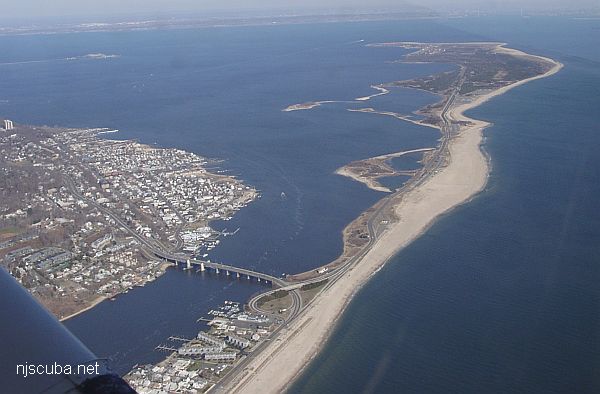
- Type:
- bay-side saltwater cove
- Depth:
- 20 ft max
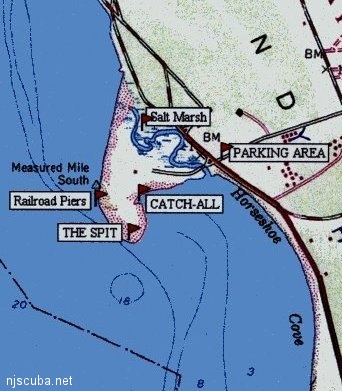
By Darren O'Shea
Horseshoe Cove is a shallow-bottomed mile-wide body of water about mid-way on the bay side of Sandy Hook, opposite Atlantic Highlands. This area has a long and interesting history, and in conversation with National Parks Service historian Tom Hoffman, I learned much of it.
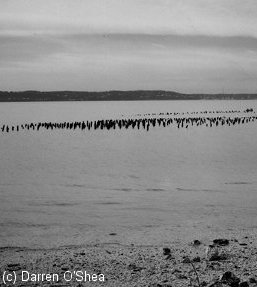
In the 1860s speculators realized the resort potential of Sandy Hook and began petitioning the government for its development. As a result, in 1864, the northern terminus of the Sandy Hook Seaside Railroad was constructed at Horseshoe Cove, along with a complex of piers and docks. From this point, steamships ran to and from New York. Mr. Hoffman claims that not one photograph exists of this bustling facility. All that remains are the decomposing wooden bulkheads and pilings out in the water.
In earlier times, many old vessels were simply abandoned in the bay. The list includes just about every type of watercraft design: barges, lighters, tugs, and schooners. In the years 1870-1930 small bands of squatters and their families actually took up residence on many of these hulks. In addition to this, the two-day blizzard of March 1888 saw more than a half-dozen Sandy Hook pilot boats sunk here. Seeking shelter from the storm, they were crushed by the thickening pack ice on the bay.
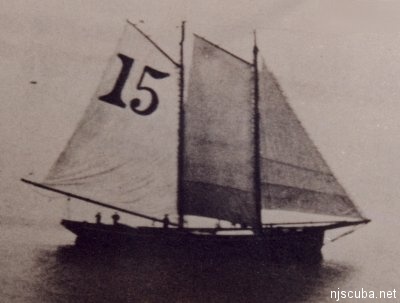
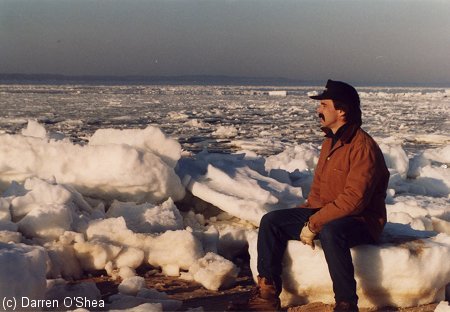
Fort Hancock, part of the harbor defenses for New York, grew steadily after the turn of the century, and by the end of World War Two 18,000 men and women were on duty within the garrison. During the Cold War, Sandy Hook became a Nike missile base, until it was finally deactivated in1974.
So what does all this have to do with diving? Over the years, soldiers, sailors, fishermen, railroad workers, residents, tourists, and many others have made their way through the area and left behind their refuse. And as we all know, one man's garbage can be another man's treasure.
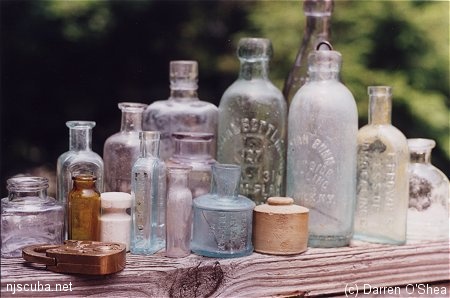
For artifact hunters, Horseshoe Cove has always been a productive dive site. To date, I have found medicine bottles, glass trays, ceramic light-receptacles, a brass padlock, and period fishing lures and lead sinkers, along with soda bottles from local companies that have since gone out of business. Large chunks of bunker coal can be seen littering the bottom as well.
Among my favorite finds are a clear inkwell that was molded for the American Standard Ink Co. of Frederick, Maryland, and a bell-shaped blue-glass bottle from the S&M Bixby Co., displaying a patent date of March 6, 1883. There are also a great many whiskey flasks, probably discarded by workers trying to keep warm on cold winter days. Experienced artifact hunters know to scan a scene for green, the telltale color of corroded brass, copper, and bronze in the water. But have you ever attempted scouting for anything green in a garden of Sea Lettuce?
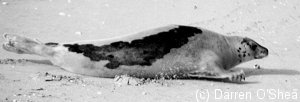
Horseshoe Cove is an easy dive. I prefer diving the cove during any syzygial (new moon or full moon) spring tide when the increased tidal range translates into added water depth. Springtime, naturally, offers outstanding visibility. The few times that we hit the water in early April we were almost guaranteed a visit by a curious and very playful Harbor Seal that I call 'Nosey'.
I make it a point to enter the water at "The Spit." Located on the leeward side of this hooked piece of beachfront is a deeper basin of water (approx. 9-15ft.) that acts as a catch-all for artifacts. As I have witnessed several times in the past, when the winds blow down from any northerly direction, the heavily agitated bay is driven up and over this outstretched arm of low-lying sand. Coupled with the effect of a flood tide, any object that is caught in this flow is pulled from the bay and settles into the basin. By keeping an eye on the weather, and planning your dive on the next favorable spring or high tide and soon after any sustained blow from those quarters, artifact hunting should be at its best.
The following rules apply to diving on the bay side of Sandy Hook:
- All divers must check-in with the Rangers before and after the dive.
- A C-card and emergency telephone number are required.
- Unlike the ocean side, diving is permitted year-round on the bay side.
- Don't forget your buddy, dive-flag and float.
The rangers will direct you where to park your vehicle. From there it's a short walk to the water, being mindful of the poison ivy lining the path.
Periodically, the National Geologic Survey asks volunteer divers to aid them in their underwater research at Sandy Hook, particularly at Horseshoe Cove. If interested, phone Mr. Hoffman at the Park's Visitor's center.
Park Ranger's Office: 732-872-5900
Visitor's center: 732-872-5970
Information and pictures courtesy of diver Darren O'Shea DOS109@aol.com
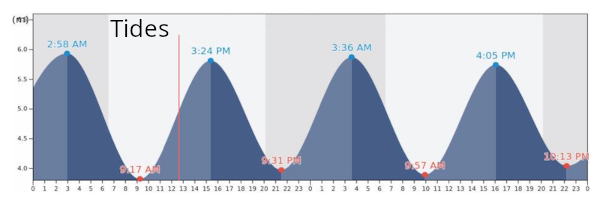

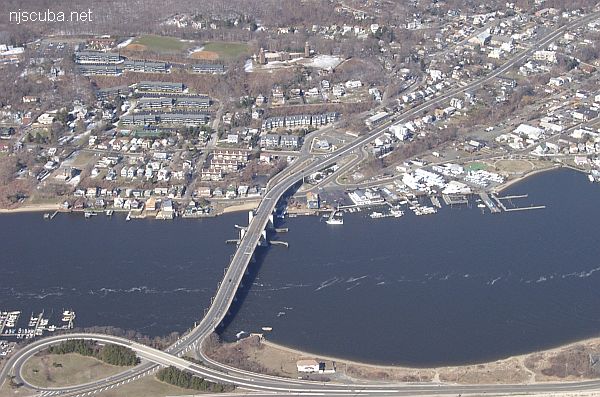

Questions or Inquiries?
Just want to say Hello? Sign the .